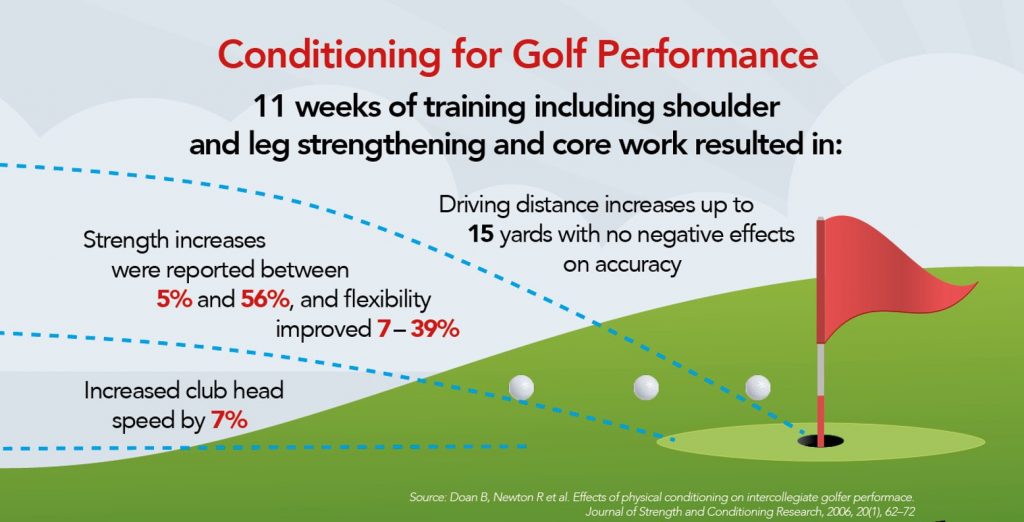Approximately 60 million people around the world play golf, some well into their eighties and nineties. Golf has many health benefits, but it is also very physically demanding. It requires strength, endurance, power, flexibility and athletic ability. This means injuries sustained while playing golf are quite common.
The most frequent injuries occur to the wrist, elbow, shoulder, knee and lower back.

62% of amatuer golfers will suffer a significant injury, mainly because they are out of shape, have poor swing technique or don’t warm-up properly. This rises to 85% for professional golfers, but this generally occurs due to overuse. For example, hitting 200 to 500 balls a day.

Physiotherapy is an effective tool for dealing with and managing golfing injuries. Treatment may include ice packs and anti-inflammatories to reduce swelling, as well as strengthening exercises for the specific area of concern. Physiotherapists may also use dry needling, mobilisation or taping to assist you in your recovery.
Physiotherapists can also assist in injury prevention by assessing any underlying biomechanical issues, and by creating a customised exercise program for swing technique, build strength and flexibility.

Golf and Back Pain
To find out more about common injuries, please view our injury library here.
A golf swing requires a combination of lower back flexion and rotation. Some golfers do not have the mobility to allow a full or pain-free swing. Low back pain accounts for up to 36.4% (Murray 2017) of golf injuries.


Our team of Physiotherapists can help to evaluate your lower back mobility and assist you with improved mobility and strength to help improve and prevent lower back pain.
Tips for reducing back pain

Training for golf
Whether you are a weekend golfer or a professional, it is essential that you do adequate off-course preparation. As Physiotherapists, our role is to identify how you can be better.
Research confirms that golf-specific training will:
- Increase strength and flexibility, helping reduce and prevent injuries
- Increase driving distance by up to 15 yards (13m)
- Increase club head speed by 7%

Golf handicap versus injury rate
A lower handicap player should have better golf biomechanics, however, in most cases, golfers will reduce their golf handicap by training more. This increase in training load increases injury in lower handicap players.

How can we help?
If you believe you have sustained a golfing injury and would like an appointment, please contact the closest clinic or book online.
Our team can provide you with:
- injury treatment and management
- biomechanical advice
- a pre-game warm-up program
- an upper body and core strength program
- An 11-week Physica- golf conditioning program
All infographics created by Co-kinetic.com

